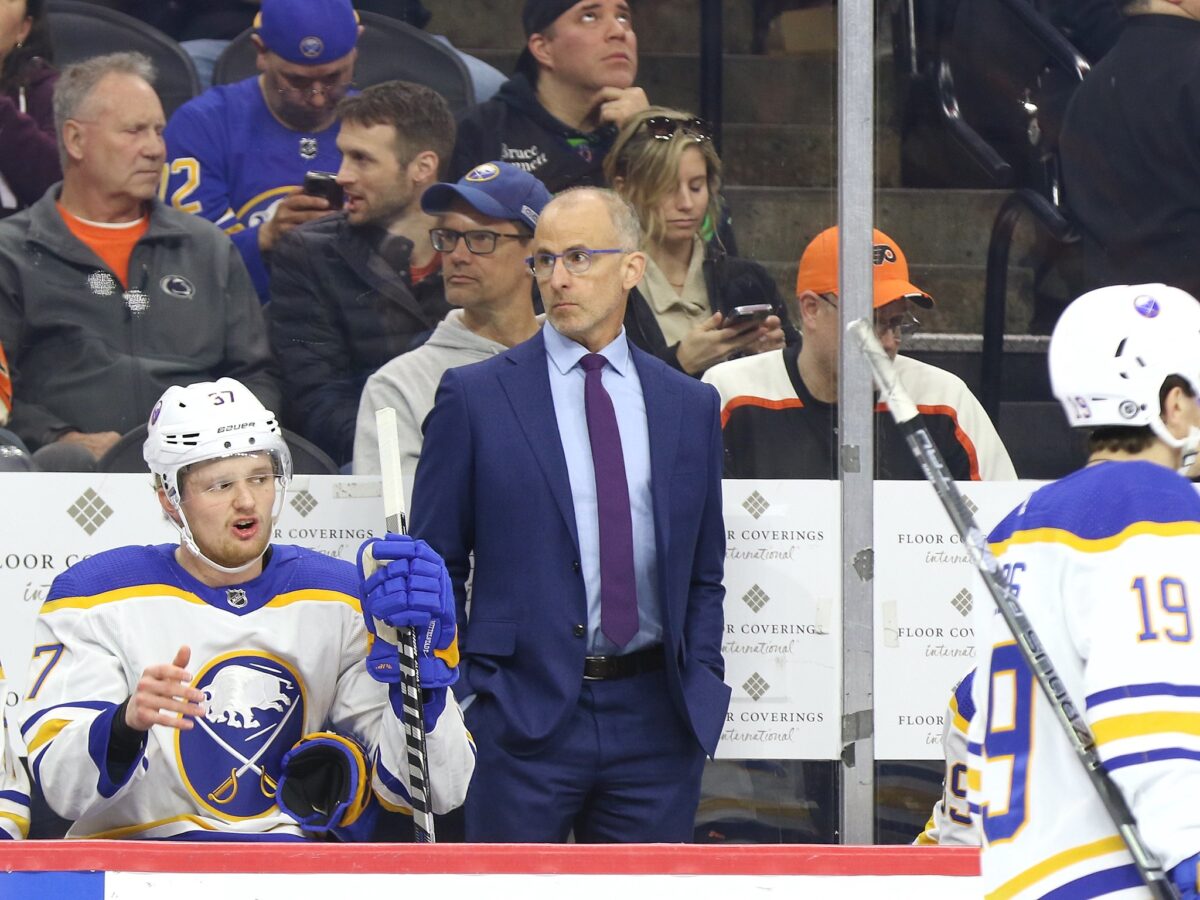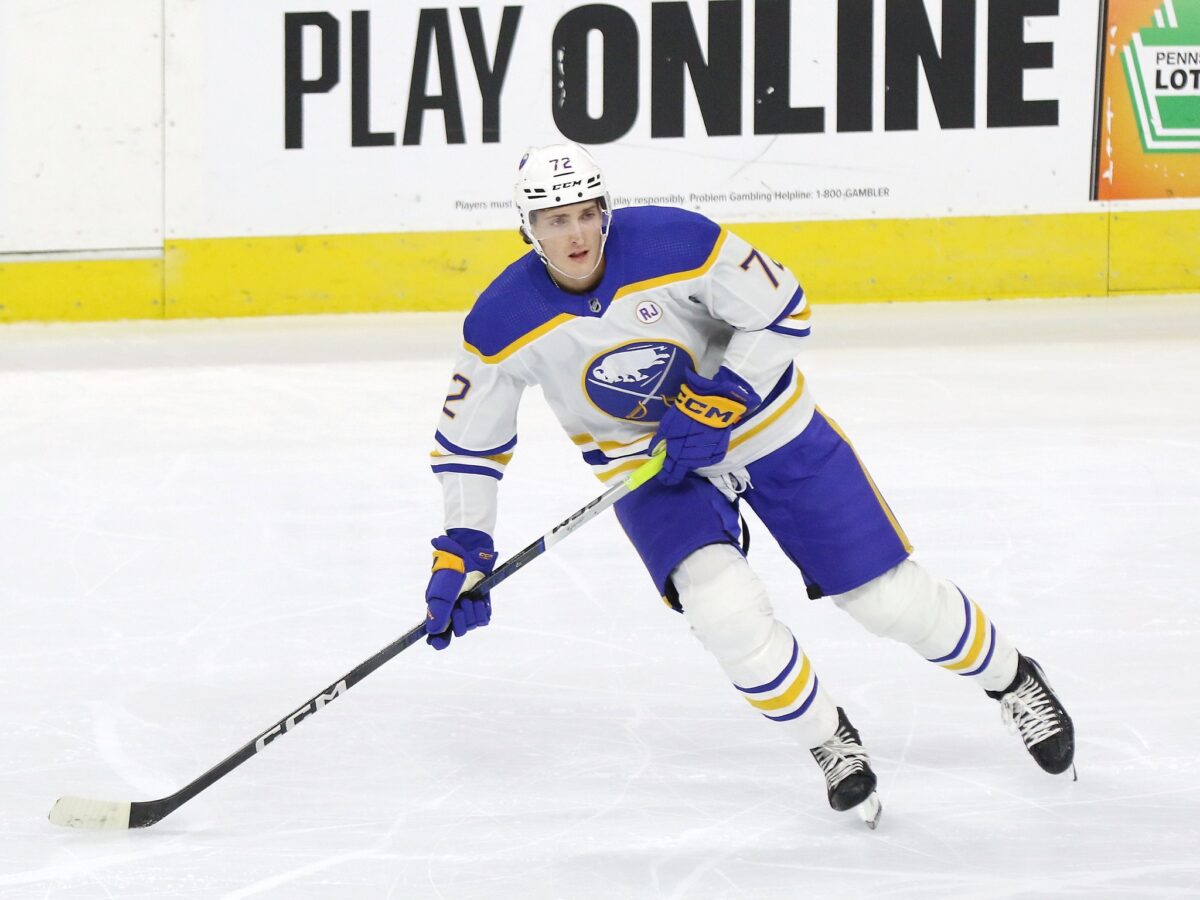The Buffalo Sabres didn’t get off to the start they wanted this season. During the first two months, nothing seemed to go their way. They suffered injuries, lacked defensive structure, and had inconsistent goaltending and scoring. However, they have slowly improved their play at even strength over the past month and a half. Their defense, offense, and goaltending have all ranked in the top half of the league since Dec. 21, resulting in a respectable 9-6-1 record since then. Unfortunately, the Sabres’ putrid power play has prevented them from reaching another gear.
Sabres’ Improvements At 5-on-5
The Sabres dug themselves an early season hole by starting 13-17-3. During this stretch, Tage Thompson missed nine games due to injury, and Jack Quinn didn’t return from his offseason surgery until the 33rd game of the season against the Columbus Blue Jackets. That night was a turning point in the Sabres’ season; it was an embarrassing 9-4 loss on home ice, and the words “FI-RE DON-NY” could be heard throughout KeyBank Center as disgruntled fans shouted in unison. The fanbase had enough of the lackluster efforts and called for head coach Don Granato’s job.

After that night, the Sabres seemingly rallied around their coaching staff. They blew out the Toronto Maple Leafs 9-3 in their next outing, and their play at even strength began to show a noticeable improvement. The team slowly started playing with a commitment to defense that hasn’t been seen in Buffalo in years. Before this turning point in late December, the Sabres ranked 26th in goals-against per 60 (GA/60), 22nd in expected goals-against per hour (xGA/60), and 29th in high-danger chances against per 60 (HDCA/60) at 5-on-5.
Related: Sabres’ 5 Biggest Trade Deadline Targets
By all accounts, their team defense was a disaster. But since that blowout loss to the Blue Jackets, the Sabres rank fourth in GA/60, sixth in xGA/60, and first in HDCA/60. That’s right — the Sabres have given up the fewest high-danger chances at 5-on-5 in the NHL since fans called for Granato’s job. The Sabres’ improved defense and puck possession has translated to more goals and chances. At 5-on-5, they improved from 2.63 goals per 60 (GF/60) to 2.97, and their expected goals per 60 jumped from 2.53 to 2.8.
The Sabres now consistently own the majority of goals and scoring chances at even strength, and the goaltending has also improved. Ukko-Pekka Luukkonen has a .933 Save Percentage since the Columbus game, and he’s beginning to establish himself as a viable starter. The Sabres are buying into their coach’s systems, executing plays much better, and they’ve been a completely different hockey team as a result.
Sabres’ Power Play Troubles
The 5-on-5 play has turned dramatically in the right direction for the Sabres, but their record is only 9-6-1 over that improved stretch, good for 14th best in the NHL. It’s much better than their record from the first 33 games, but the Sabres will need more than that to get into the playoffs. Their record hasn’t improved as dramatically as it could have because of their power play. Buffalo’s success rate on the man advantage was a lackluster 14% before Dec. 21, and it has stayed nearly the same, at 14.3% since. Not only do they struggle to score on the power play, but they also give up the most short-handed goals against and expected goals against in the NHL.

To put in perspective how bad it’s gotten on the power play, let me break it down by expected goal share (xGF%). The Sabres’ power play over their past 16 games has an xGF% of just 73.6. Let’s compare that with the most effective 5-on-5 line this season, which is the top line for the Edmonton Oilers of Connor McDavid, Ryan Nugent-Hopkins, and Zach Hyman, who have a 73.5 xGF%. In other words, the Sabres’ power play over the past month and a half has been equally effective at outplaying four opponents as McDavid’s line is against five. With all of the Sabres’ talent on their power-play unit, something like this should never happen.
Assistant coach Matt Ellis runs the Sabres’ power play, and neither he nor the players have had any answers all season. There isn’t enough movement, the passing is too slow and deliberate, the zone entries are poor, and they aren’t executing any of the things that made them successful last season.
Where Do the Sabres Go From Here?
The Sabres’ have a .594 point percentage in their last 16 games. If they continued that pace for the rest of the season, they would finish with 87 points. Last season, 92 points were required to make the playoffs, and that’s lower than usual in today’s NHL. Long-term injuries to Quinn and Mattias Samuelsson will make the stretch run much more challenging, and even if the Sabres can continue to play solid even-strength hockey without them, they will only make a push for the playoffs if the power play improves significantly. The coaching staff is running out of answers on how to fix this power play, and they’re almost out of time.
Stats from Natural Stat Trick, Moneypuck.com, and NHL.com
